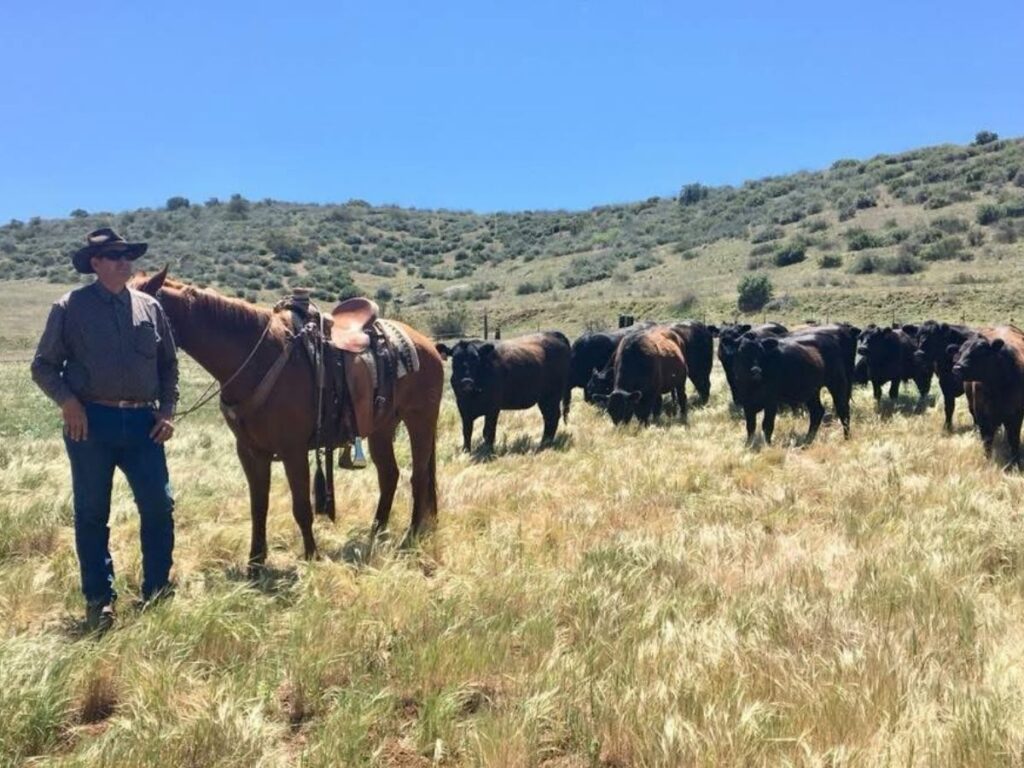Sourcing Grass Grazed Beef – How to Find a Local Cattle Rancher
You are what you eat but you also are what you eat, eats. Once I started feeding a family it was hard to picture feeding little kids and babies feed lot beef. Those cows are confined in small pens and stand around all day eating grain, making them fat. This causes the meat to have a lot of fat too. It’s also lower in essential omegas than grass-fed beef. The only problem with buying grass-fed from your local supermarkets is that it’s all mostly from Argentina. It is shipped from thousands of miles away and the cows are confined on land that often used to be rainforests.

I was so happy to have stumbled across a YouTube video one day of a gardener I follow who was touring a local cattle ranch. I got even more excited when I saw that it was actually very close to where we live. I was able to contact the rancher and he invited us on our own tour. It was such an eye opening experience and we have been buying our beef from there ever since. His cattle are grass grazed and grass finished. They spend their days on acres and acres of fresh pasture with access to plenty of fresh water from a stream nearby.

What 4J Horse and Livestock is doing goes way beyond just selling meat to customers. They are running a sustainable land management program. By leasing over 5,000 acres from the Bureau of Land Management they are helping to stop wildfires here in Southern California. Before John came into the picture the land that they lease had burned down several times. Imagine the impact on wildlife and endangered species – like the western burrowing owls, that dwell here. By bringing in cattle to graze it’s actually saving the ecosystems. The cows keep the brush levels low which curbs fuel for fires. They also fertilize the land which then can capture carbon and essentially moisture.

As the daughter of a chef I was used to buying our meat fresh for the week and never really had much in my freezer as far as frozen beef. That all changed once we started buying from our local cattle rancher. They normally sell a whole, half or quarter of a steer. This can be a big investment up front but per pound turns out to be much less than supermarket beef. You also need to buy a simple stand alone freezer dedicated to your beef delivery. Our meat is delivered to our doorstep labeled and vacuum sealed into individual portions and cuts. I usually get a quarter of a steer at a time which fits in a small, 7 cubic feet chest freezer. These small freezers can easily fit in a garage or laundry room. As a family of five we go through about a 1/2 a steer per year.

If you need help finding local grass-fed beef, just ask around on Facebook or check on Craigslist. You can even Google “grass-fed beef near me” and click on the map to see if anything is close to you. Small farmers and ranchers are even able to ship small quantities of frozen meat at a time. New technology in shipping allows sellers to type in the destination and a program can tell them exactly how much dry ice is needed to deliver the meat still frozen. It’s incredible! Polyface Farms has been doing this for years now. They have set the example of this business model even. Some are buying free range organic eggs from the Polyface farm and getting them shipped for less than what they would cost in stores.

I recently reached out to John, my cattle rancher to get a little more insight on the business side of his ranch. I was sad to learn that his operation is currently capped and not taking on any new customers. This is not because they don’t have enough land or enough cattle to graze. It’s simply because there are not enough meat processors out there. My hope it that this information will get out and people will start to put more of a demand on small, boutique food operations like John runs. I believe that with the right knowledge and demand, any sustainable food operation can thrive.